Mirror exhibition, historical reflection
Ancient objects people created, used and valued can provide a clear picture of an ancient civilization. Chinese history can be found reflected in various artifacts and daily items, including exquisitely crafted mirrors made of bronze.
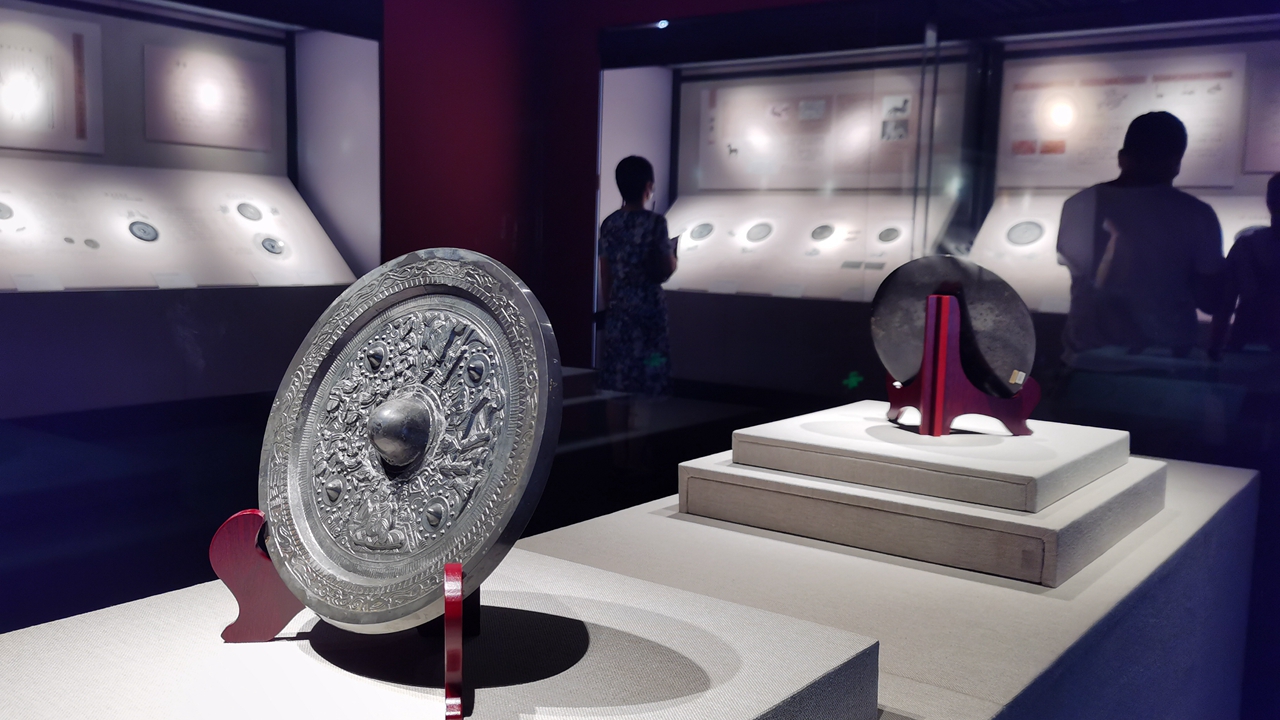
Han Dynasty bronze mirrors are on display at Shenzhen Museum’s ancient art division. Photos by Cao Zhen
A new exhibition at Shenzhen Museum’s ancient art division is displaying more than 70 highly decorative bronze mirrors from the Han Dynasty (202 B.C.-A.D. 220). Through the fantastically complex patterns and characters inscribed on the backs of the mirrors, visitors can have a glimpse into Han Dynasty people’s social lives and spiritual world.
Bronze mirrors have a long history in China, dating to the Shang Dynasty (1600-1046 B.C.). In the earliest period, like other bronzeware, mirrors were used as ritual objects in sacrifices; later they were only accessible to imperial families and aristocrats; in the prosperous Han Dynasty, bronze mirrors were available to common people.
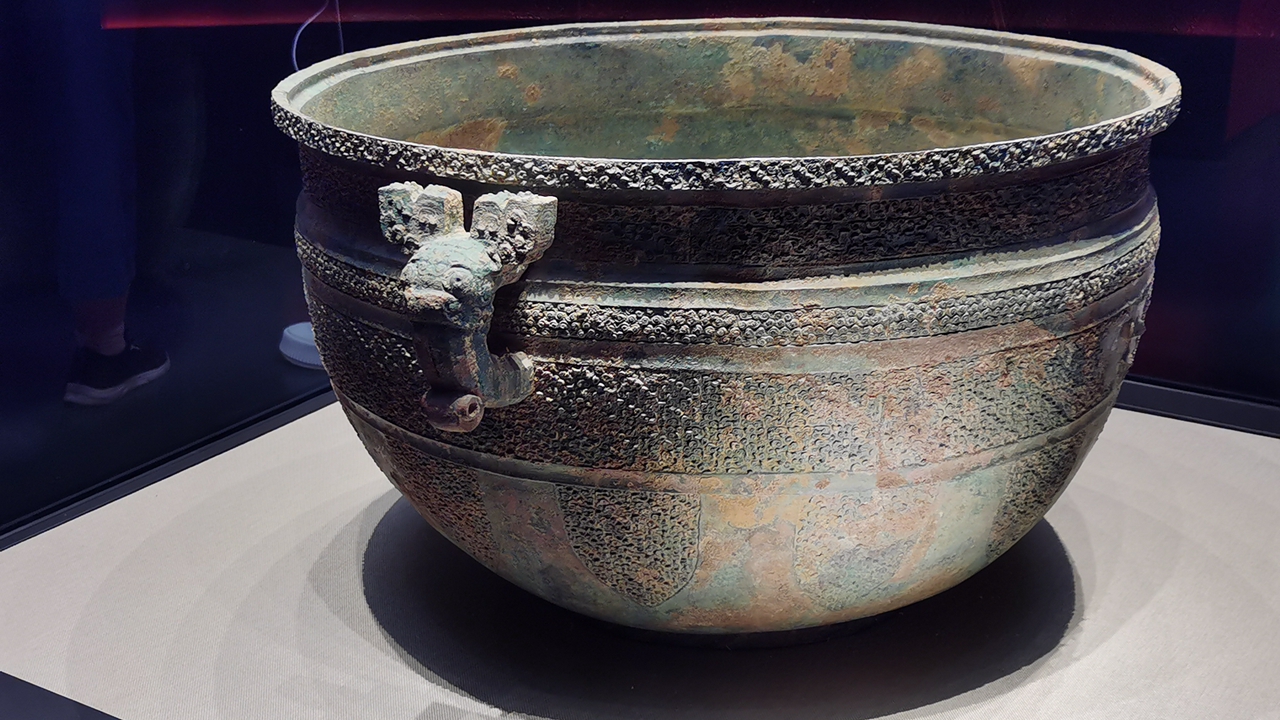
A Spring and Autumn Period (770 B.C.-476 B.C.) bronze vessel is on display. Before the use of mirrors, ancient people used water collected in vessels as mirrors.
Before bronze mirrors gave way to glass mirrors in the 18th century, the basic form of bronze mirrors as cast metal objects with a highly polished reflective surface and a back with relief decoration had remained unchanged for thousands of years.
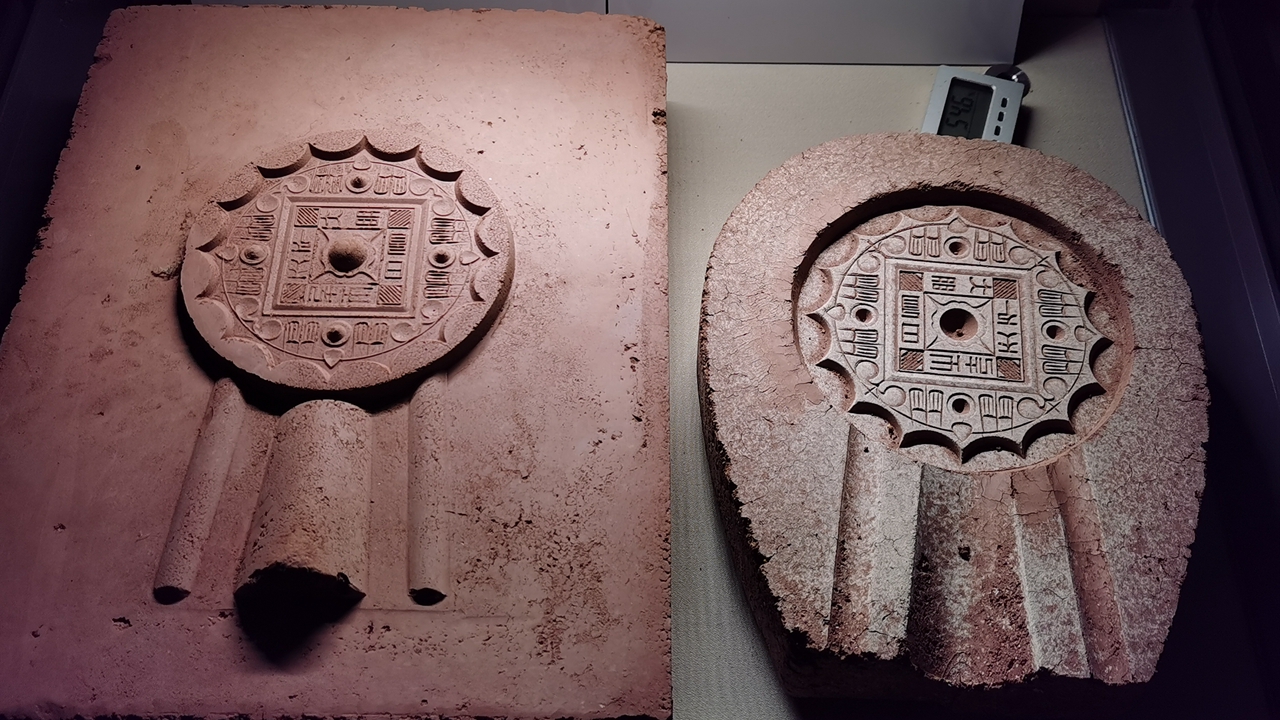
Modern clay molds are on display to show how ancient bronze mirrors were cast.
In the exquisitely wrought designs and inscriptions showing deities, mythological beasts and auspicious texts on the backs of these mirrors, centuries of craftsmanship, aesthetic taste, dynastic change, philosophy and consumer culture are revealed.
Changes in style and decorations in different historical periods reflect the evolution of social and cultural ideas and preferences. For example, mirrors in the Warring States Period (476-221 B.C.) usually bore geometrical, floral, leaf, cloud and beast patterns; the patterns of the Han Dynasty mirrors were mainly deities and mythological beasts; while in the Tang (618-907) and Song (960-1279) dynasties, the patterns showcased realistic figures and scenes.
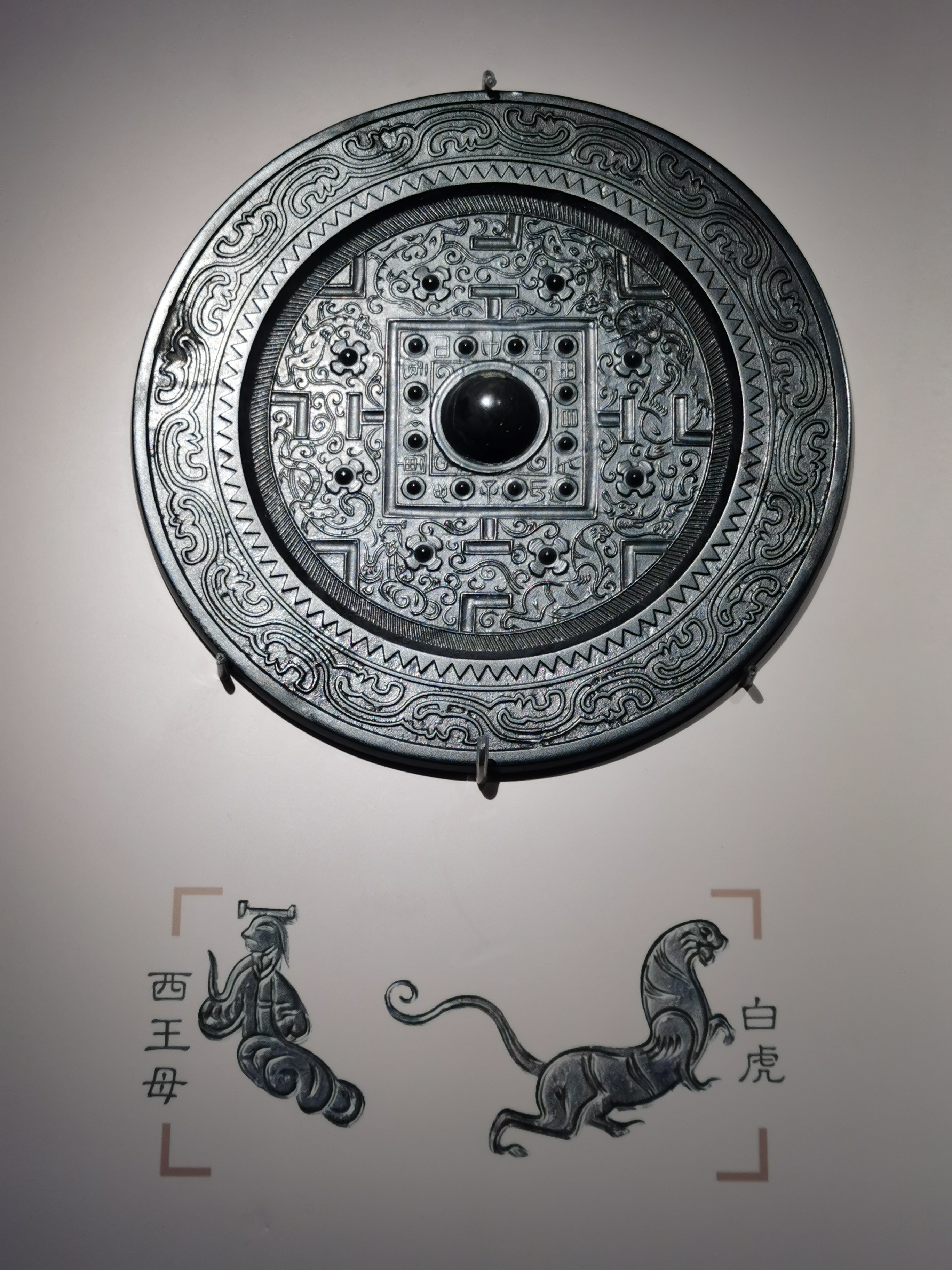
A Han Dynasty bronze mirror’s patterns show the Queen Mother of the West and the White Tiger, an auspicious animal in Chinese mythology. The patterns are printed on a board along with the mirror.
For visitors to have a clear observation on the intricate patterns, the exhibition has printed some patterns on the introduction boards alongside the exhibited mirrors. Modern-made clay molds are also on display to show how ancient bronze mirrors were cast.
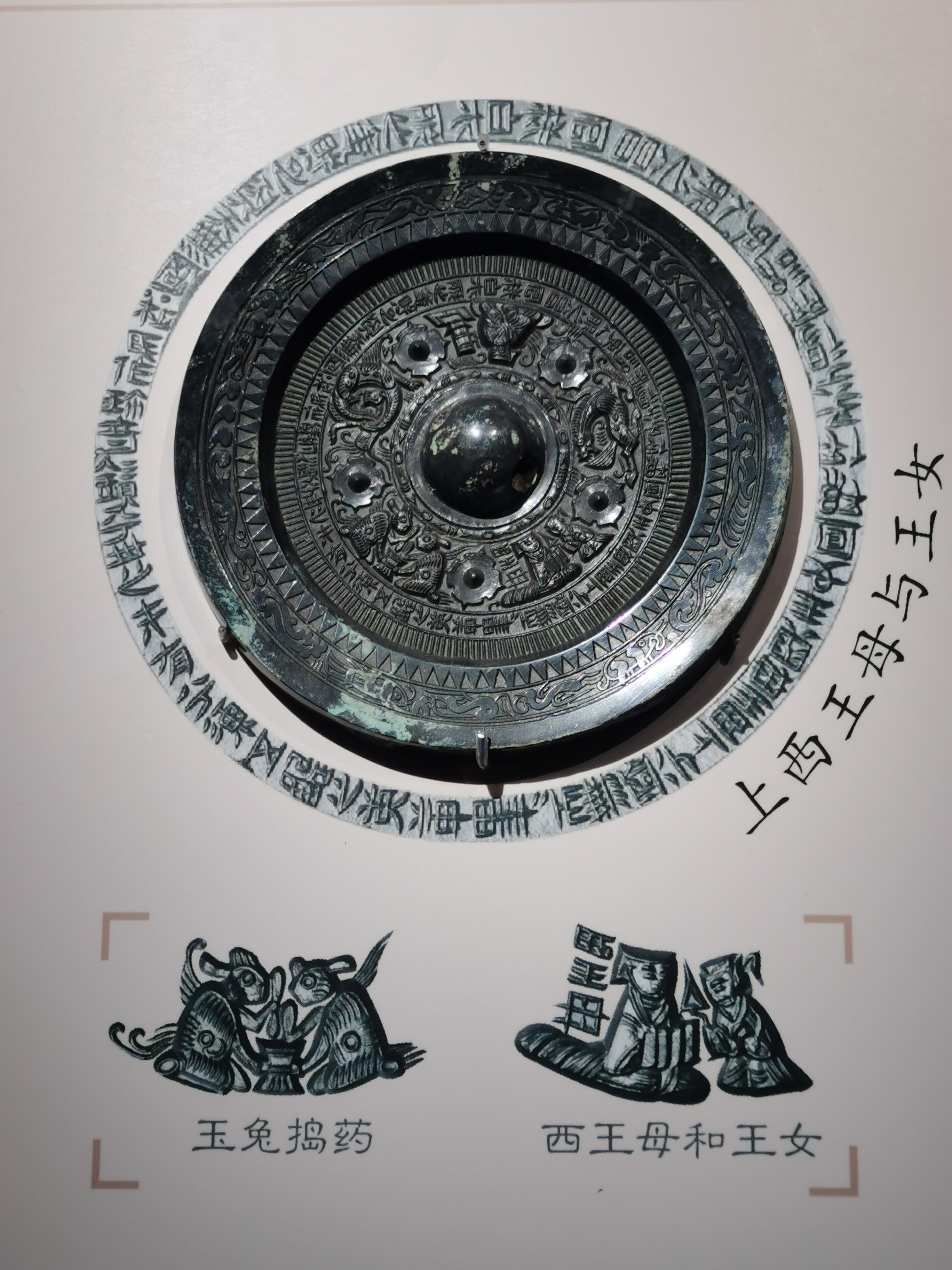
A Han Dynasty bronze mirror’s inscribed patterns show the Jade Rabbit mashing herbs, the Queen Mother of the West and her daughter. The patterns are printed on an exhibition board along with the mirror.
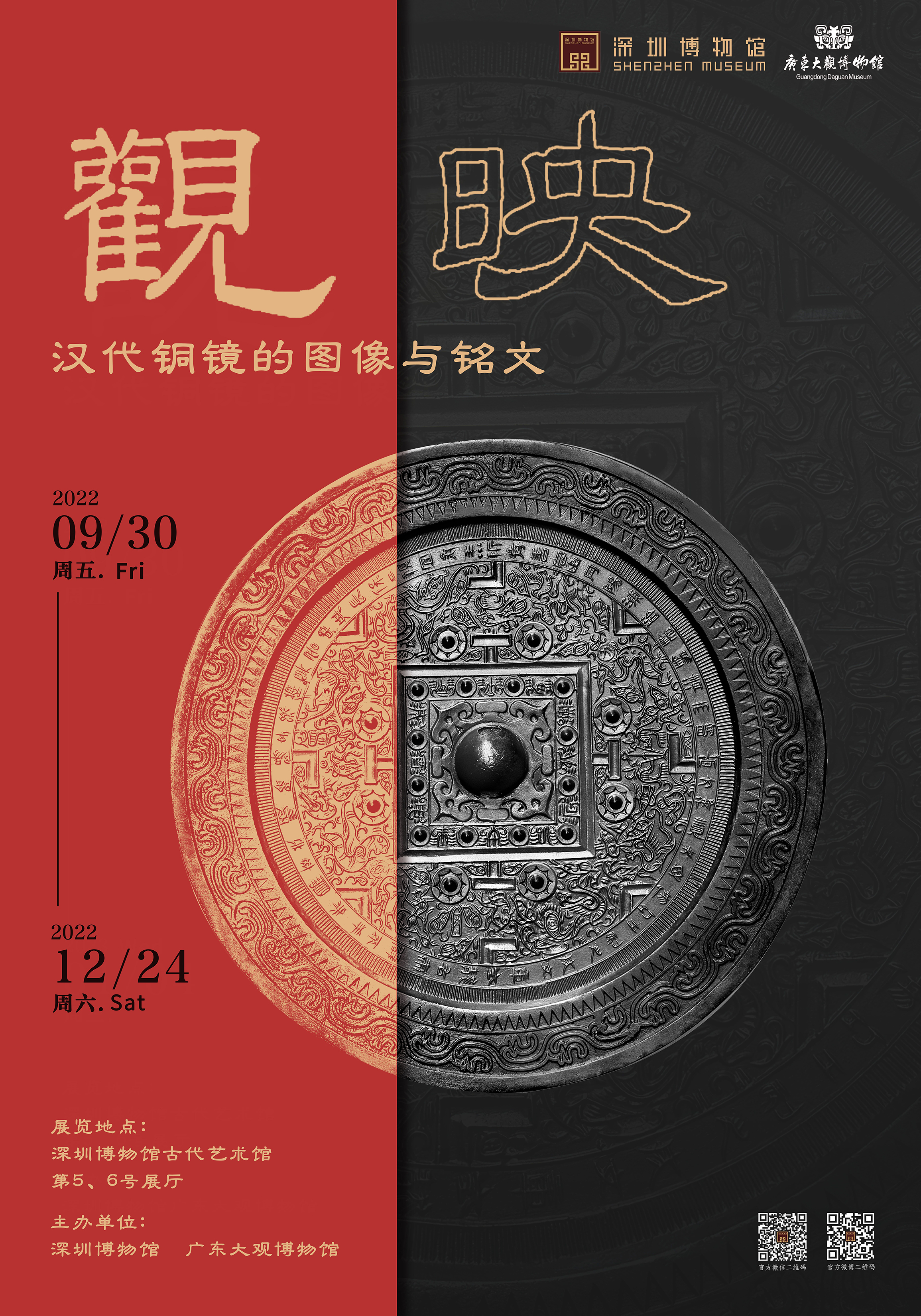
A poster for the exhibition.
Dates: Until Dec. 24
Booking: WeChat account “iszbwg”
Venue: Shenzhen Museum (of Ancient Art), Futian District (福田区深圳博物馆古代艺术馆)
Metro: Line 9 to Hongling South Station (红岭南站), Exit A